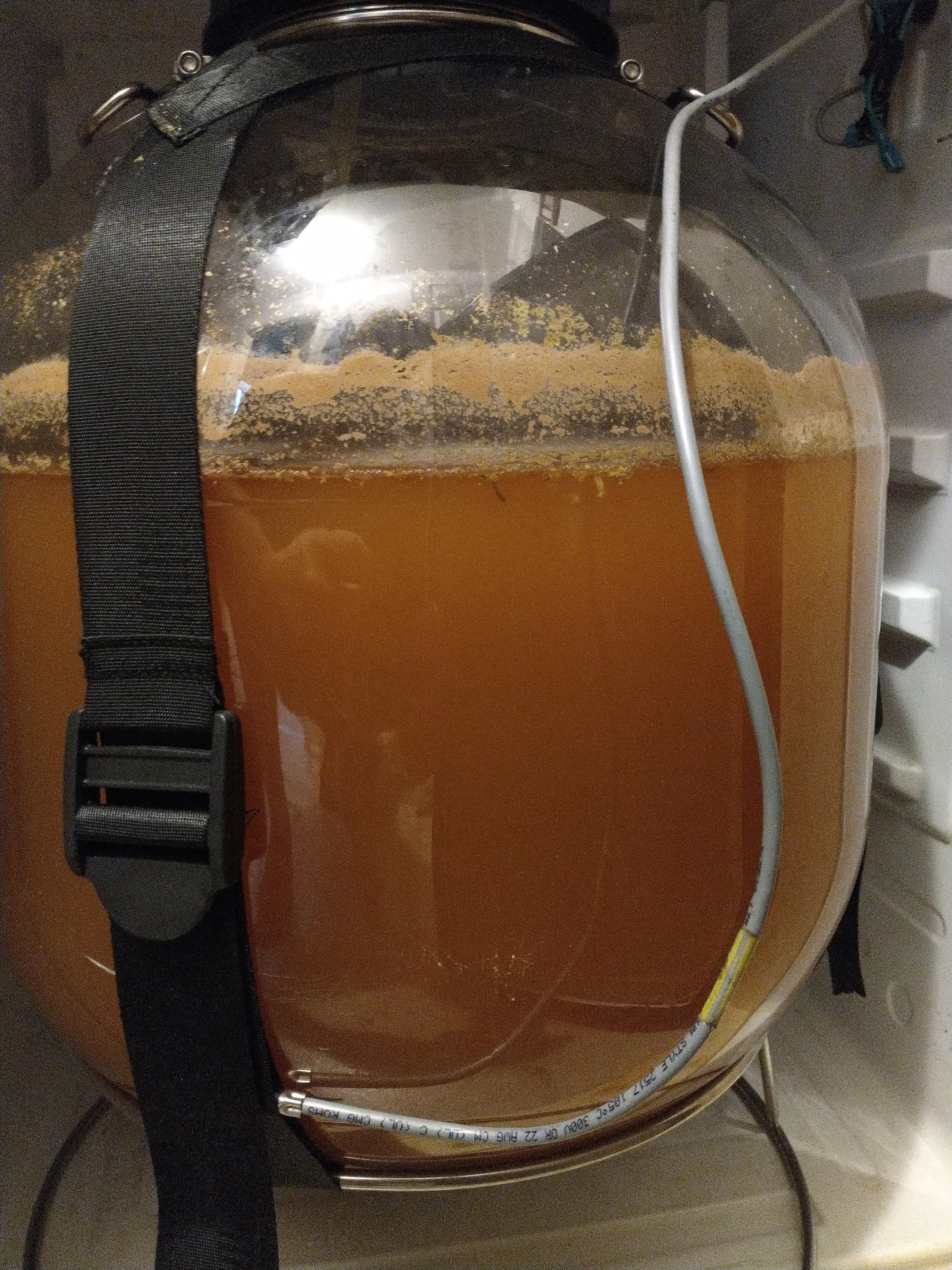I have no experience with either Windsor or Nottingham, but I'm looking for a passable dry English strain that I can use during the hot summers. I just did several brews with S-04 (mixed results so far, but still developing). I planned to do the next few with a Windsor/Nottingham blend.
First up is a basic 1.043 best bitter. I pitched a packet of each when running the wort into the fermenter. Volume was a little over 6 gallons. A thin krausen had formed by the 6 hour mark and final gravity was reached about the third day after pitching. To date I've really only got recent experience with 1469, A09, and S-04. My results with this fermentation are puzzling, and I wonder if anybody with experience with these yeasts could shed some light on what happened:
On the 4th day the beer tastes completely finished. No green flavors, no diacetyl. That's at least a couple days faster than I'm used to, more with S-04. Great. Flavor is nutty, earthy, maybe, with the vaguest fruit. Great. Attenuation was only 75%. With S-04, I would expect maybe 79% from this wort (there was a pound of muscovado sugar in the boil). A09 would have given me about 82-83%. Not so great, but the beer doesn't really taste underattennuated.
Here's the bad one: the beer, which tastes finished, is opaque. I've never seen this before. Based on gravity and taste, following my normal process with normal yeast, I would have casked this on day 3 or 4. I almost always fine with gelatine, because I am a clear ale freak, but what I'm removing normally is a slight haze. This is something different. The odd part is that it doesn't taste yeasty. With the strains I'm used to, just a haze of yeast still in suspension tastes foul. BUT those yeasts have enough sense to flocc out when they are wrapping up--usually the beer is almost clear before the diacetyl fades completely.
So... Did the Nottingham just not take off? It's supposed to be a good flocculator--surely this doesn't fit into anybody's definition of "good flocculator," right? Do I go ahead and put this in a keg with primings and finings? Should I use more gelatine than normal or something?

First up is a basic 1.043 best bitter. I pitched a packet of each when running the wort into the fermenter. Volume was a little over 6 gallons. A thin krausen had formed by the 6 hour mark and final gravity was reached about the third day after pitching. To date I've really only got recent experience with 1469, A09, and S-04. My results with this fermentation are puzzling, and I wonder if anybody with experience with these yeasts could shed some light on what happened:
On the 4th day the beer tastes completely finished. No green flavors, no diacetyl. That's at least a couple days faster than I'm used to, more with S-04. Great. Flavor is nutty, earthy, maybe, with the vaguest fruit. Great. Attenuation was only 75%. With S-04, I would expect maybe 79% from this wort (there was a pound of muscovado sugar in the boil). A09 would have given me about 82-83%. Not so great, but the beer doesn't really taste underattennuated.
Here's the bad one: the beer, which tastes finished, is opaque. I've never seen this before. Based on gravity and taste, following my normal process with normal yeast, I would have casked this on day 3 or 4. I almost always fine with gelatine, because I am a clear ale freak, but what I'm removing normally is a slight haze. This is something different. The odd part is that it doesn't taste yeasty. With the strains I'm used to, just a haze of yeast still in suspension tastes foul. BUT those yeasts have enough sense to flocc out when they are wrapping up--usually the beer is almost clear before the diacetyl fades completely.
So... Did the Nottingham just not take off? It's supposed to be a good flocculator--surely this doesn't fit into anybody's definition of "good flocculator," right? Do I go ahead and put this in a keg with primings and finings? Should I use more gelatine than normal or something?




































![Craft A Brew - Safale S-04 Dry Yeast - Fermentis - English Ale Dry Yeast - For English and American Ales and Hard Apple Ciders - Ingredients for Home Brewing - Beer Making Supplies - [1 Pack]](https://m.media-amazon.com/images/I/41fVGNh6JfL._SL500_.jpg)





















